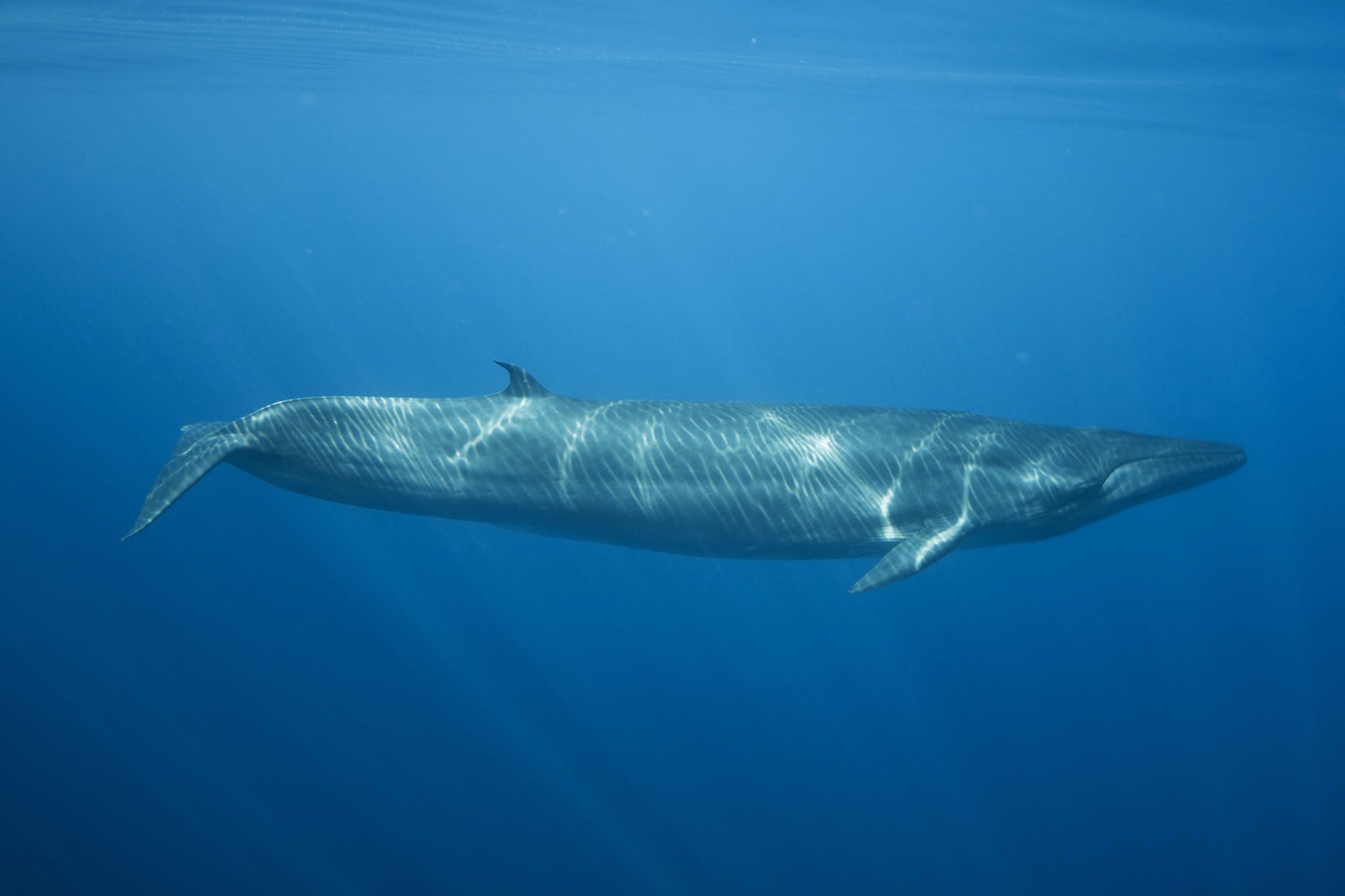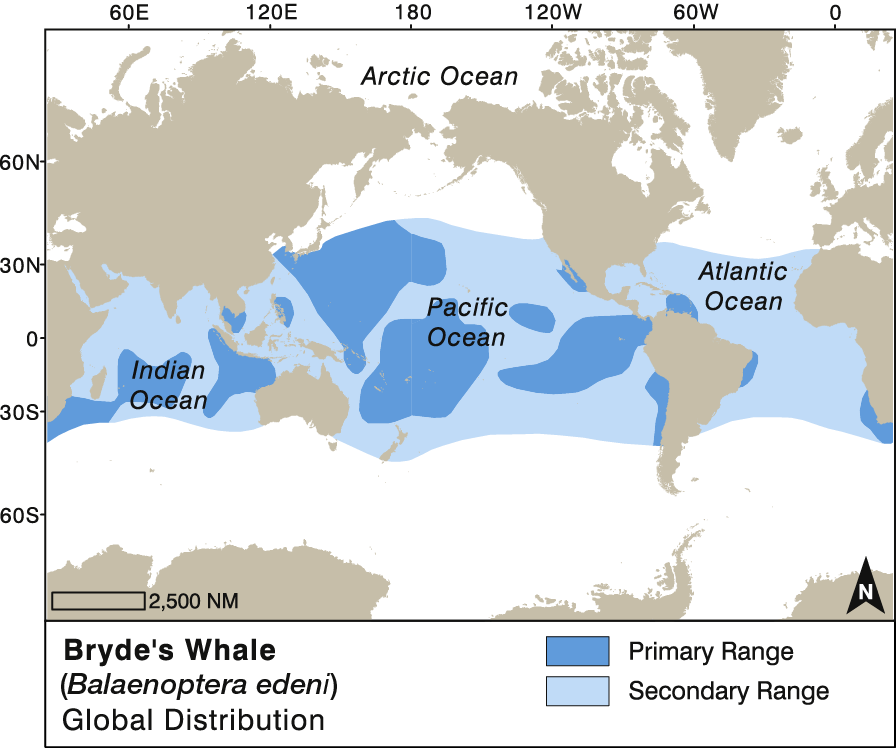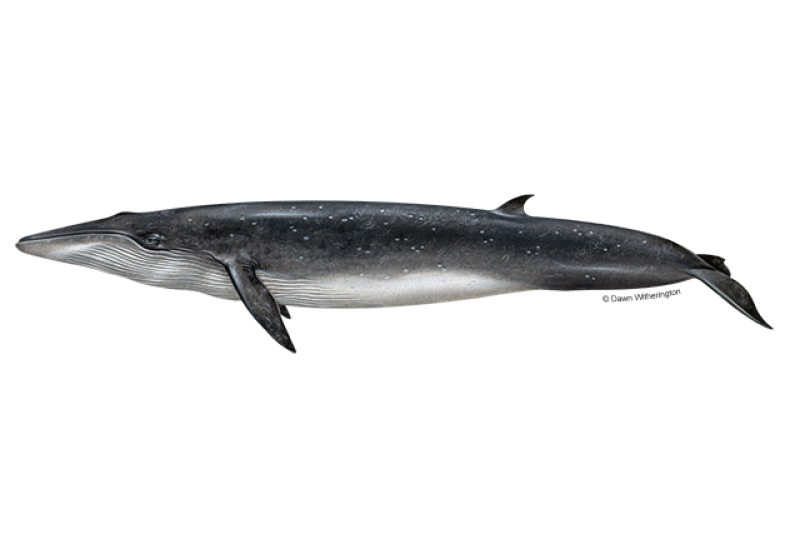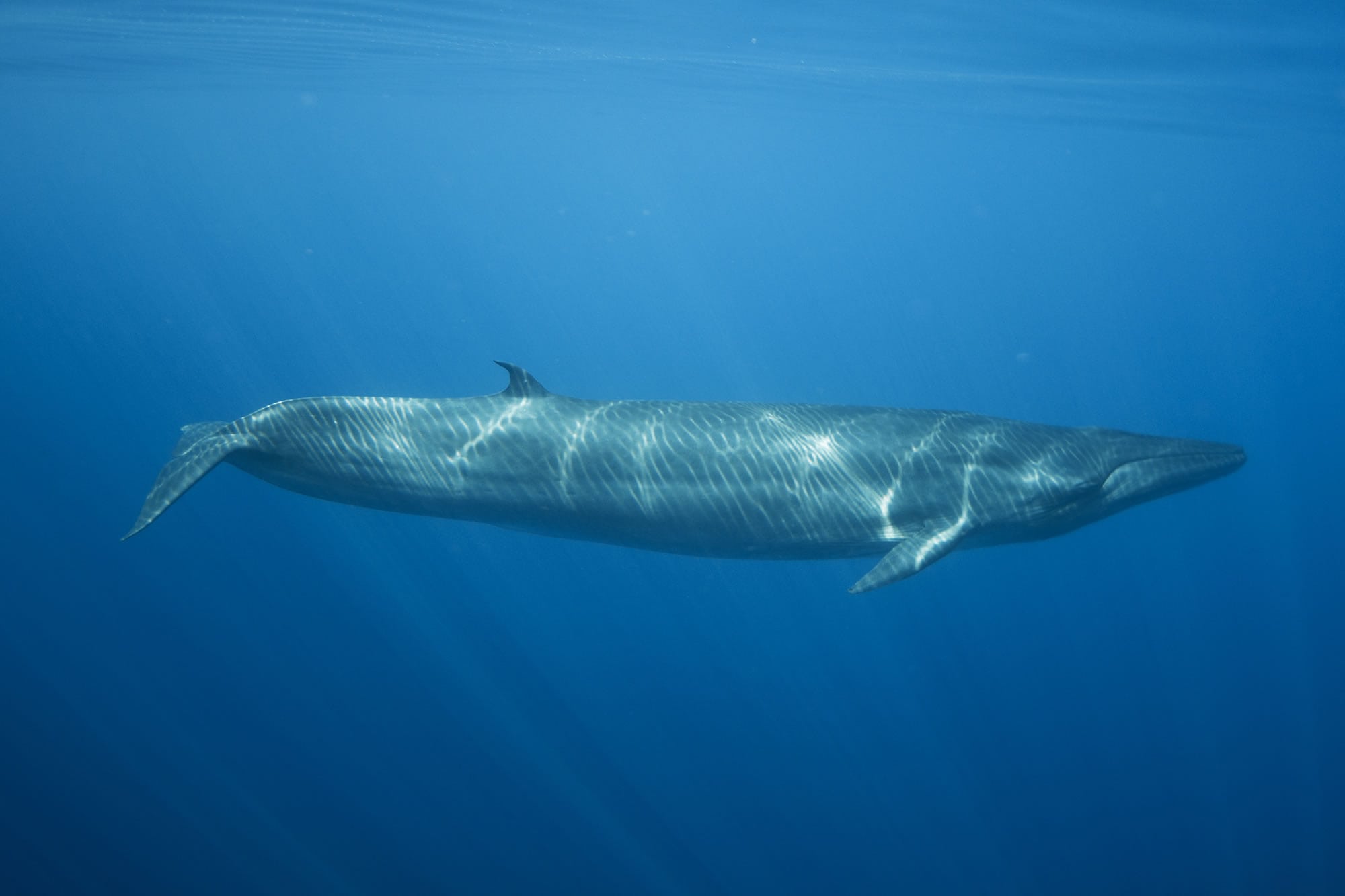Deep in the Mariana Trench, a strange sound echoed through the abyss. It was 2014 when scientists first recorded the eerie noise—a low, guttural grunt followed by a high-pitched, mechanical echo. Dubbed the ‘biotwang,’ this mysterious sound puzzled researchers for years. Was it a geological phenomenon? An unknown sea creature? Or something else entirely? The answer, it turns out, lies with one of the ocean’s most enigmatic creatures: the Bryde’s whale.

Image credit: Whale & Dolphin Conservation USA
Bryde’s whales (Balaenoptera edeni) are tropical giants, named after Johan Bryde, a Norwegian entrepreneur who helped establish South Africa’s first whaling stations. These whales can grow up to 15 meters long and weigh as much as 40 tonnes. Unlike many other whale species, Bryde’s whales are non-migratory, preferring the warm waters of the Pacific and Indian Oceans. They are often spotted near the North Island of New Zealand, where they feed on fish, krill, and plankton. Their unique physical feature—three long ridges on their heads—sets them apart from other baleen whales.
But what makes the Bryde’s whale truly fascinating is its vocalizations. The biotwang sound, characterized by its low-frequency moan and high-pitched squeak, was finally linked to these whales after years of research. Scientists from the National Oceanic and Atmospheric Administration (NOAA) and Google’s AI department collaborated to analyze underwater recordings. They observed Bryde’s whales on nine occasions while simultaneously recording the biotwang, confirming the connection. This discovery was made possible by advanced audio analysis and AI technology, which sifted through thousands of hours of ocean sounds to identify the source.

Image credit: Whale Watching Handbook
Despite their size, Bryde’s whales are shallow divers, often staying within the top 10 meters of the water column. They resurface within five minutes, making them easier to observe than deep-diving species. However, their population is critically low, with only around 140 individuals estimated in Auckland, New Zealand. This has earned them a ‘Nationally Critical’ status, highlighting the urgent need for conservation efforts.
The biotwang sound is just one example of the complex vocalizations produced by marine animals. Many people are surprised to learn that whales, especially baleen whales, can create such intricate sounds. This discovery not only sheds light on the communication methods of Bryde’s whales but also underscores the importance of protecting these magnificent creatures and their habitats.

Image credit: NOAA Fisheries
In the end, the mystery of the biotwang sound serves as a reminder of how much we still have to learn about the ocean’s depths. With advancements in technology and continued research, who knows what other secrets the underwater world might reveal?
References:
Bryde’s whale – Whale & Dolphin Conservation USA – link
Bryde’s Whale | Whale Watching Handbook – link
Bryde’s Whale | NOAA Fisheries – link
Categories: Conservation, Do you know, Marine Life, Science Discoveries
Tags: biotwang sound, Bryde's whale, marine mysteries, Ocean Exploration, whale conservation
Religion: N/A
Country of Origin: Indian Ocean, New Zealand, Pacific Ocean, South Africa, United States
Topic: Marine Biology
Ethnicity: N/A



